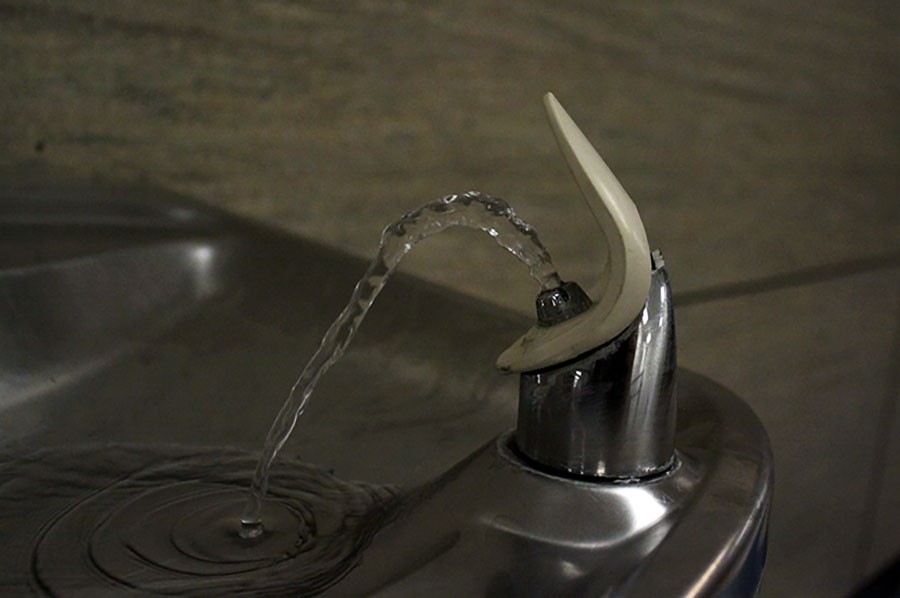Water’s natural taste
Comparing the school’s water to Flint Michigan
The water fountain at our school in the art building.
February 19, 2016
Comments are made by students who don’t enjoy how the water tastes at school. Some science teachers make jokes, saying to test it for bacteria and viruses, but why does the water taste so different, and does the bad taste relate it to the actually dangerous water situation in Flint, Michigan where the students and townspeople are suffering from lead poisoning.
“To make bottled water [the water companies] take out all of the minerals,” science teacher Mary Scarborough said. “Then there is a nothing taste to the water. After that is done they go and start putting some minerals in, things they think will taste good. Our [fountain water] is just normal for this part of the country. Could there be something in the water? Sure, but you would have to find that out with testing. Until then, you just have to trust that this is how water is supposed to taste.”
According to news sources such as CNN, the town people were told the water was fine for 18 months. Their water was contaminated with iron from the Flint river and lead from the service pipes in people’s homes. Lead poisoning is un-reversible in small children, causing brain damage, mental damage, behavioural problems, comas and death.
“Lead poisoning leads to crazy amount of damage,” Scarborough said. “Particularly to children under six. Forever. They don’t recover from that. Lead poisoning changes the brain and how it works.”
The school’s water fountains may taste bad, but students express how they know that they are lucky to have access to fresh water, a vital necessity for human survival.
“It’s terrible what is happening up there,” freshman Sophie Olenoski said. “I hope that it doesn’t happen to our school obviously and that they are telling us the whole truth about what’s in our water. I am lucky though that [here] at least I can drink safe water.”








